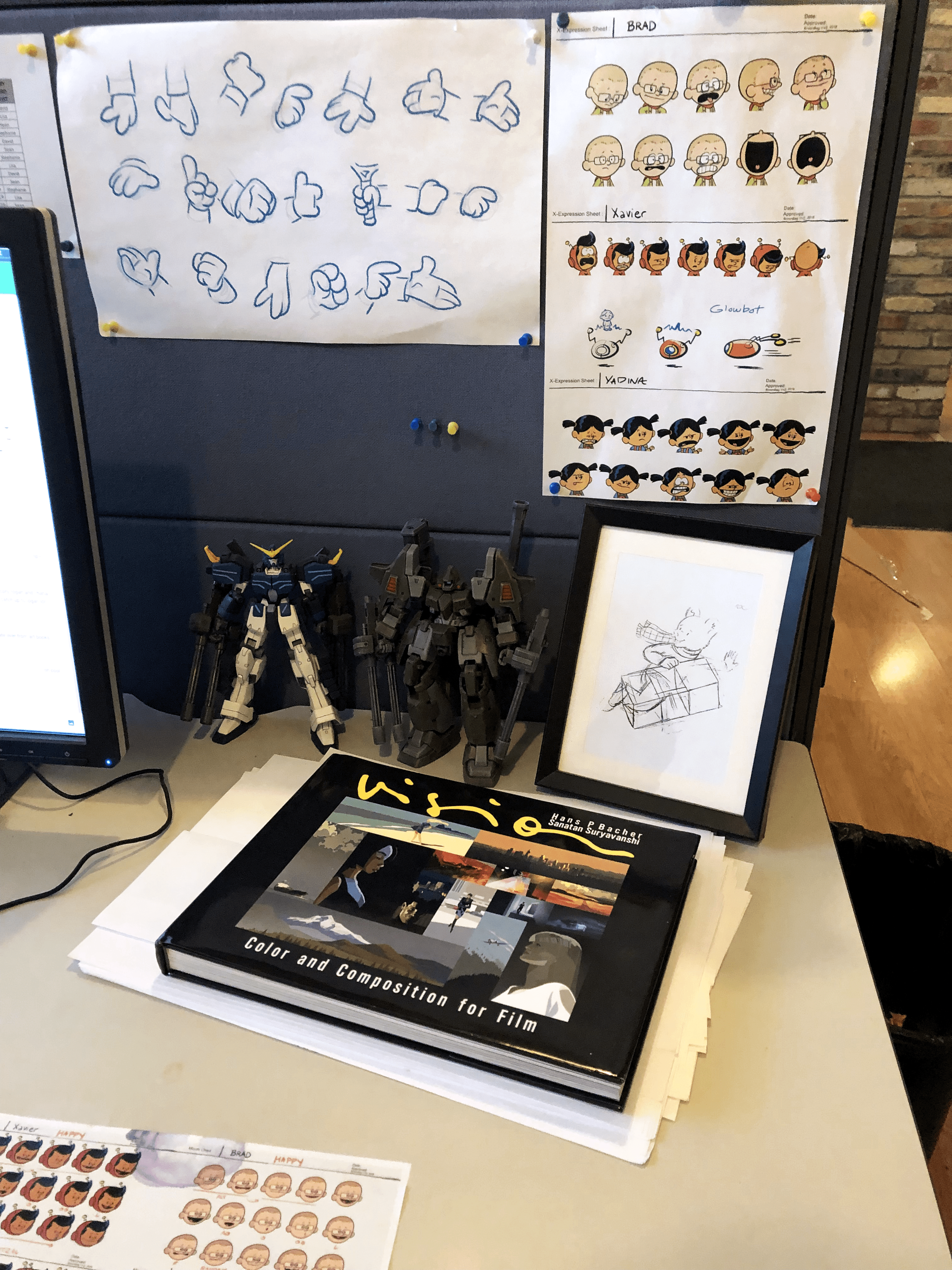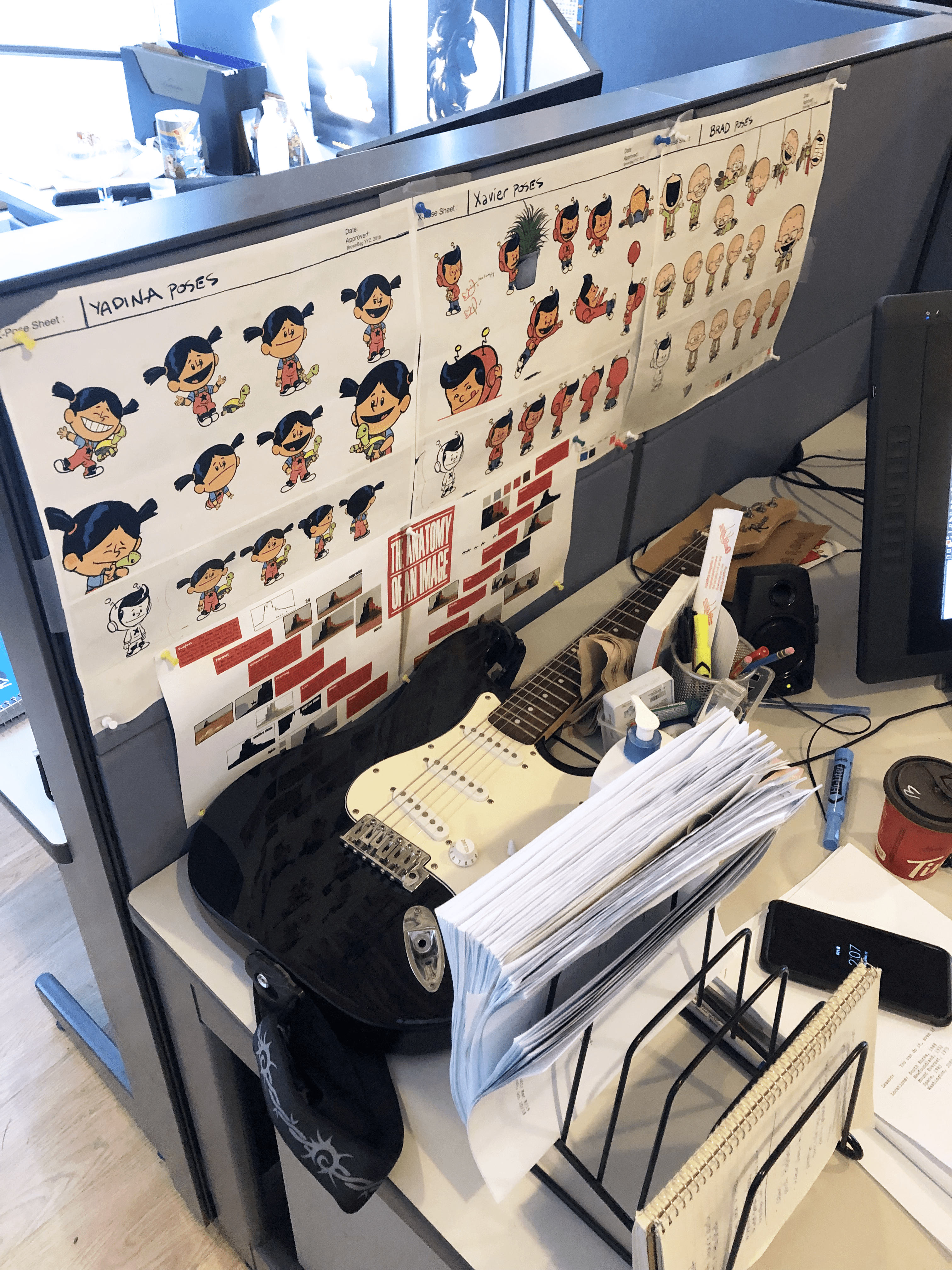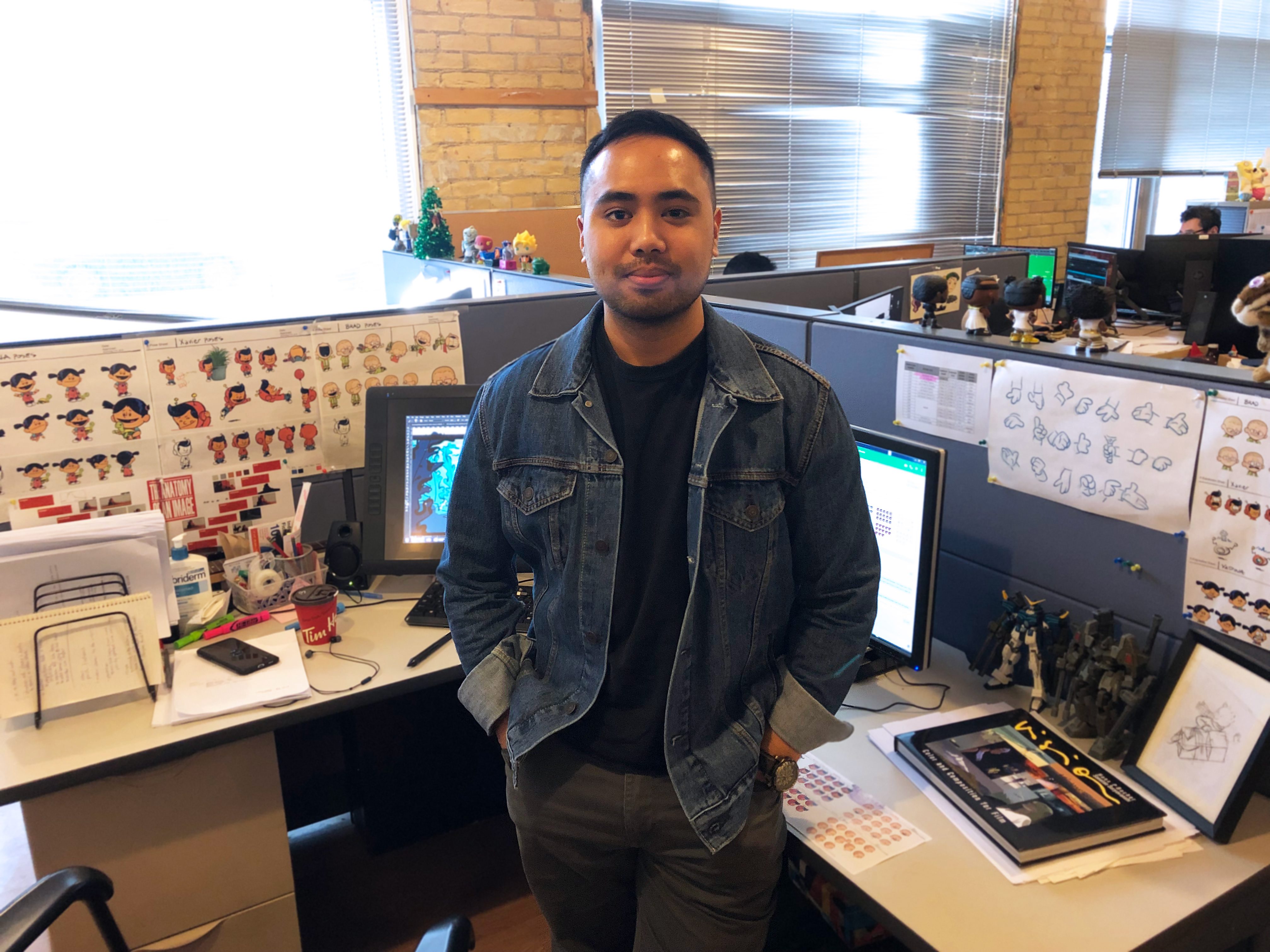Meet David Quilao, Funpack Designer on Xavier Riddle and the Secret Museum, who recently sat down with us to share how he found his home in the world of animation and what tips and tricks he’s picked up along the way. Continue reading to find out more!
How did you get into animation?
To be honest, I actually never planned on getting into animation in the first place. I knew I wanted to do something art related, so I took Art Fundamentals at Seneca College hoping to get some guidance. It didn’t take too long for me to realize that all the best students ended up in the Animation program. I knew then that that’s where I had to be if I wanted to grow as an artist, so a year later I applied and got in. But unlike most of my peers, I took the Game Design stream. Admittedly, I was pretty addicted to gaming, so it was only natural that I thought that’s what I wanted to do.
After graduating, I spent 2 years doing 3D art for mobile apps and games. But after that, I just stopped. It didn’t work out for me. For a year I didn’t do anything and my creativity and motivation fell to an all-time low. Got a job at a grocery store. Then in retail. I honestly considered going back to school and starting an entirely new field.
But to my luck, Legend 3D opened up shop in Ontario so I took the opportunity. Fortunately, I was only there in the beginning and missed out on all the chaos. It wasn’t a gaming or animation job, but it did get me through some tough times. Most importantly, it got me excited about the whole entertainment industry again. It also introduced me to the wonderful world of compositing. I had finally found a job that I enjoyed doing.
So how exactly did I get into the animation industry? A friend, who also works at 9 Story, told me about an opening and suggested I apply. A couple of all-nighters and a LOT of Red Bull later, I whipped up a brand new portfolio. And with that, I managed to score my first job in animation as a compositor. Since then, I’ve held positions in design, layout, and now, funpacks.
How long have you worked in the animation industry?
4 years and counting!
What’s your current role and what does it involve?
Currently, I’m the Funpack Artist on Xavier Riddle and the Secret Museum. I provide the first stage of visual development and direction on the show. My role involves me analyzing the script, then identifying and creating the artwork needed for the storyboard artist, and subsequently the design teams, to do their tasks. The work mainly focuses on designing the locations, characters, and props, but at times it allows me to suggest colours, FX, and compositing. Although often time constrained, the more I provide for the team, the less guessing everyone has to do throughout the production.
(*David’s thoughts* “Funpack” artist is not a very descriptive title at all. I find myself explaining the role a lot. When asked what I do by someone who’s not in the industry, I just say “concept artist” haha. It is, however, a fun job.)

What do you like most about working in animation?
I get to be a part of something big. It’s an opportunity to create something lasting. Something that kids can enjoy now and reminisce when they get older. But most importantly, I get paid to draw!
What’s your favourite tool to use and why?
Google. I do a lot of researching as a funpack artist, especially on a historically inspired show such as Xavier. I often spend my first day after reading a new script doing nothing but gathering reference images and researching more into the historical figures and locations. History fascinates me and everything is online just waiting to be found.
That, and it has the answer to all your questions. Hey Google, why can’t I get rid of that thingy on my cursor in Photoshop…
What kind of materials do you reach for when you are struggling or need inspiration?
1) Get a fresh set of eyes to look at my work. Most often, if not always, my Director and Art Director. No one person has the answers to everything, that’s what makes animation a collaborative process.
2) More recently though, I’ve gone back to studying. I just finished a book Vision: Colour and Composition for Film by Hans P. Bacher and Sanatan Suryavnashi. The book is helping me put creating art into perspective. It aims to eliminate having to rely on “happy accidents” and instead of being aware of the effect each choice you make has on an image.
3) When all else fails, I take a break.
If you could have created one iconic cartoon character, who would it have been?
Gundam Heavyarms Custom (see desk for reference).

What are your biggest influences and inspiration?
Movies, TV, games… all sorts of media. I pull inspiration from all of them depending on what it is I’m doing. But my biggest influence when it comes to creating art has to be The Lord of the Rings movies. The craft and imagination that went into creating it still blow my mind.
What’s been the most challenging thing about working in animation?
For me, it’s finding the motivation to create art outside of work. In my downtime, ideally, I like to do things unrelated to work. But now that my hobby is my work, I tend to resort to other activities.
What advice would you give someone considering getting into the animation industry?
Your portfolio becomes more effective when it’s catered to the show you’re applying for. Variety is always nice, but showing the studio you can mimic the show’s style makes you a more valuable artist from the start.
Outside of animation what are you most passionate about?
Music. The minute I get home, I have my guitar in hand. I love playing with other people and we’ve had a couple of jam sessions here at 9 Story, but not often enough. If you didn’t notice already by passing by my desk, I’m always ready for another one!


